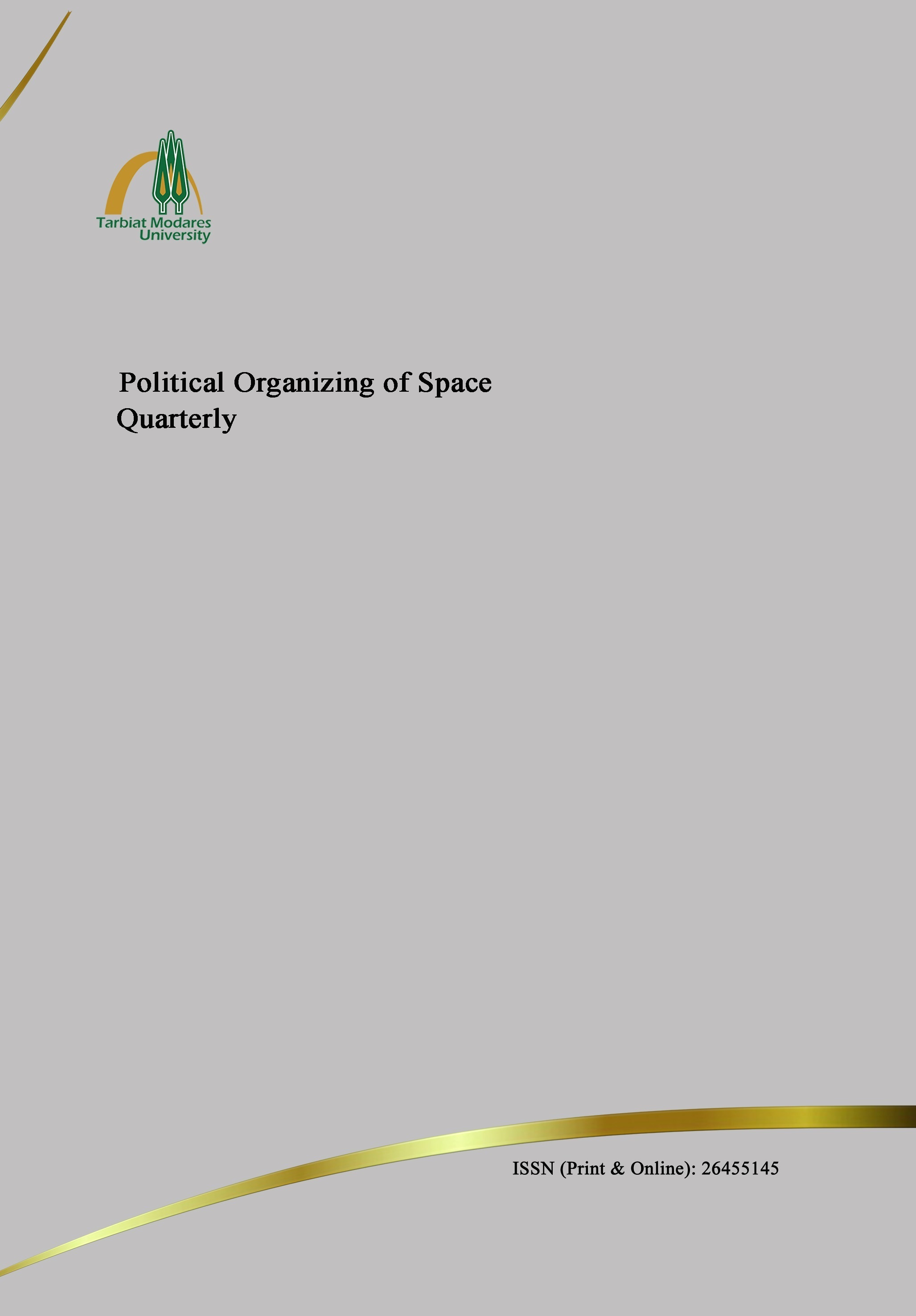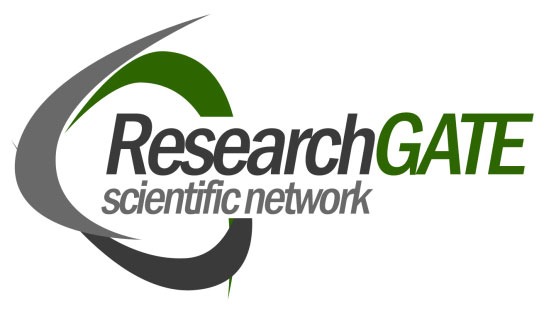Enter your email address
Submit
Write your message









































2645-5145 :pISSN
2645-5145 :eISSN
Political Organizing of Space
- Editor-in-Chief: Mortaza Tavakkoli
- Manager-in-Charge: Ebrahim Roumina
- Publisher: Tarbiat Modares University
- Journal Type: Scientific
- Publication Period: Quarterly
- Access Policy: Open
- Publication Format: Electronic
| Aim and scope The aim of this journal is to publish scientific and research articles within the field of political geography, specifically regarding the organization of political space, that result from original research conducted using scientific methods and documents, preferably first-hand. The language used will be clear and objective, avoiding any biased or emotive language, while adhering to the conventional structure of academic writing and maintaining grammatical correctness. Additionally, consistent citation and formatting features will be employed and technical term abbreviations will be explained upon their first use. The Journal of Space Political Planning seeks to disseminate the latest scientific research in the areas of political geography, space political planning and organization to commentators, academic users, and relevant executives. Objective and clear language is employed to create a logical flow of information and technical terms are properly explained. The journal adheres to conventional academic structure and formatting, while ensuring precise word choice and grammatical correctness. Biased language is avoided and the formal register is maintained throughout... |
| Peer-Review Policy: The peer review process in Political Organizing of Space is double-blinded in which the reviewer’s name is unknown to the author and, vice versa. Submitted articles go through a structural and subject evaluation to align with Political Organizing of Space principles. Matches go through a double-blind peer review by three field experts (non-editorial staff) chosen by the Board based on specialty.The Board makes the final article selection. Duties of Reviewers: - Assist editor in decision-making and potentially help authors improve papers through editorial communication. - Decline reviews if unqualified or unable to promptly review. - Treat manuscripts as confidential documents and avoid unauthorized sharing. - Conduct objective reviews, avoiding personal criticism and providing clear, supported feedback. - Identify relevant, uncited published work and report potential plagiarism or overlap with other publications. - Maintain confidentiality of information and ideas, avoiding personal gain or reviewing papers with conflicts of interest. |
| Open Access Policy: This Journal contents and the individual articles are freely available to readers without subscriptions or payments through the journal website or its permanent repositories. This open-access journal is published under the terms of the Creative Commons Attribution-NonCommercial 4.0 International License which permits Share (copy and redistribute the material in any medium or format) and Adapt (remix, transform, and build upon the material) under the Attribution-NonCommercial terms. |
| Licensing Policy :This Journal is licensed under the terms of the Creative Commons Attribution-NonCommercial "(CC BY-NC)" This license lets others remix, tweak, and build upon your work non-commercially, and although their new works must also acknowledge you and be non-commercial, they don’t have to license their derivative works on the same terms. View License Deed | View Legal Code |
| Publishing Ethics: This journal follows all the terms and conditions of the Committee on Publication Ethics (COPE) and complies with the highest ethical standards in accordance with ethical laws. Authors may refer to the Committee on Publication Ethics’ International Standards for Authors for comprehensive information. |
| Authors fees : Dear authors/ paper contributors, you are being humbly informed that the journal charges 600 Thousand Tomans (In two steps: Reviewing: 200 Thousand Tomans and Publishing: 400 thousand Tomans) |
| To receive iThenticate certificate, refer to the SAMIM NOOR Site at: https://www.samimnoor.ir/view/fa/Default/%d8%b5%d9%81%d8%ad%d9%87-%d8%a7%d8%b5%d9%84%db%8c |
| Self-archiving policies for authors Authors are permitted to post their work online in institutional/disciplinary repositories or on their own websites. Pre-print versions posted online should include a citation and link to the final published version in this Journal as soon as the issue is available; post-print versions (including the final publisher's PDF) should include a citation and link to the journal's website |
| Copyright Policy : Under open access license, authors retain ownership of the copyright for their content, but allow anyone to download, reuse, and reprint, modify, distribute, and/or copy the content as long as the original authors and source are cited properly. |
-
Identifying and Measuring the Importance of Spatial Policy Indicators of Ecolodge. Study Case: Hawraman Region
Sayed saeed sajadi, پورطاهری Pourtaheri, Abdolreza Roknodin Eftekhari
-
The role of human geography in the Afghan crisis
Naqibullah Mazlomyar, Ataollah Abdi, siavash rastishuli, Maryam Rahmani
-
Seligman's Positive Psychology Approach to the Study and Analysis of Khosrow's Statecraft in Ferdowsi's Shahnameh
-
Effective Components in the Construction of Territorial Identity in the Achaemenid Era Based on Charismatic King Thought in the Framework of Hegel's Soul Phenomenology
-
Structural obstacles to human development in Kurdistan province
-
Investigating the Impact of Social Networks on Users' Political Demands (Study Comparing the Telegram and Instagram Networks)
-
The Geopolitical Implications of the Karabakh Crisis for the Relations of the Islamic Republic of Iran in the Caucasus
-
Applying and Assessing Expediency in the Framework of Governance of Urban Management of Tehran Metropolitan
-
Governance in the 21st Century and Its Challenges
-
تحول مفهوم قدرت در قرن بیست و یک و آینده توازن قوا در منطقه جنوب غرب آسیا
-
Components of the Contingency and Impact Severity of Human-oriented and Natural-based Threats in Urban Water Infrastructure
Fateme Bakhshi Shadmehry , Said Hadi Zarghani,- Omid Ali Kharazmi
-
An Analysis on the Planning of Identity Signs in the Urban Spaces
-
Space Justice in Iran and the Political Organization of Space in Tehran
-
Foundations of Spatial Injustice in Iran
-
Role of Oil-based Economic Components in Spatial Transformations of Tehran and Tabriz Metropolises
- Jvad Imani Shamlou, mohammad Reza Pourjafar,- Mojtaba Rafieian
-
Effect of Population Flotation on the Population Gap at Day and Night in Tehran Metropolis
-
Investigation and analysis of the conflicts between Iran and Saudi Arabia(Case Study: Yemen)
M.R, Hafeznia,, Ebrahim Roumina, farzad ahmadi davazdah emami
-
An Analyzing of Geography of Elections and New Techniques of Islamic Parliamentary Candidates in Electoral District of Islamabad Gharb and Dalahou
Mohammad raoof Heidari Far, Eghbal Pahkideh, Katayoon Ayvani
-
Zoning of Golestan province with the aim of locating the construction of military centers with emphasis on passive defense requirements
-
Analysis factors of convergence and divergence of Iran's foreign policy towards the member countries of the Persian Gulf Cooperation Council (case Study: United Arab Emirates)
-
Analysis of the possession of local managers of management skills in Karat-Taybad village
-
:union: of Hansai cities, a model for modern regionalism in the framework of inter-city links
-
Study of the effects of management structures on space mismatch Case study: a comprehensive and detailed plan of the city of Tehran Abstract
-
Investigating the impact of social networks on users' political demands
-
Explanation of regional requirements in the development of Chabahar
Ataollah Abdi, Yahya Safavi, Mohamad osman Hoseain bor, moslem namdarzade
-
The Impact of Ethnic Geopolitical Weight on Political Processes (Case Study: Pashtuns in Afghanistan)
If you have forgotten your password or username, please use the "password recovery" button. At the modern intelligent Yektaweb website, you can access to all TMU Press journals by a single account.
All prevoiusly sent articles to the old website will be reviewed and processed there and you should login to the old website to track your previously submitted articles.
In tha cases of facing with any technical faults or needing help to continue the journal processes, use the "send ticket" button to connect with Yektaweb SAMA Support Center. All questions will be answered asap.











